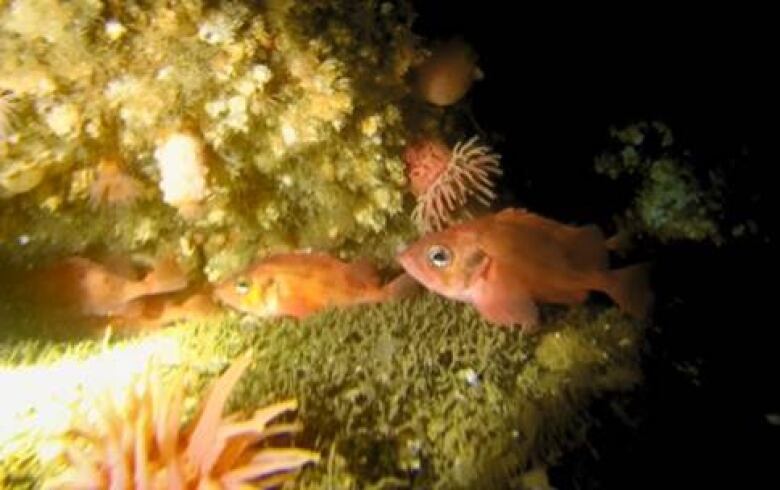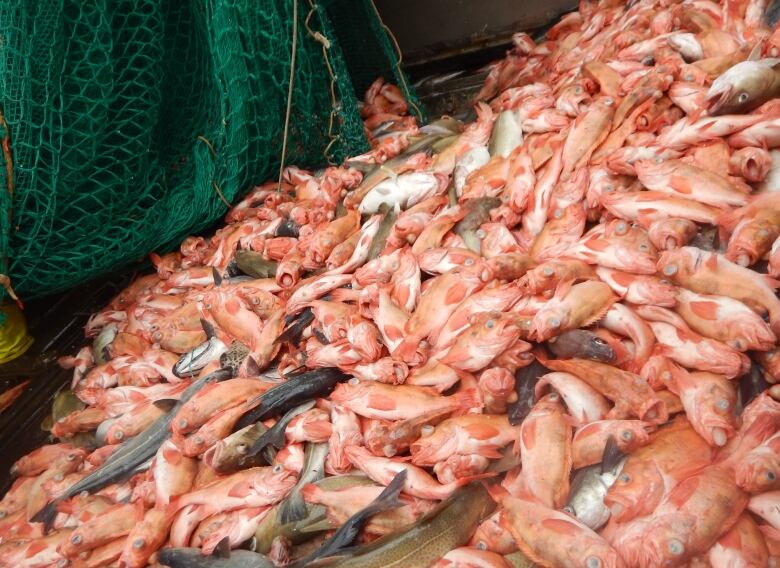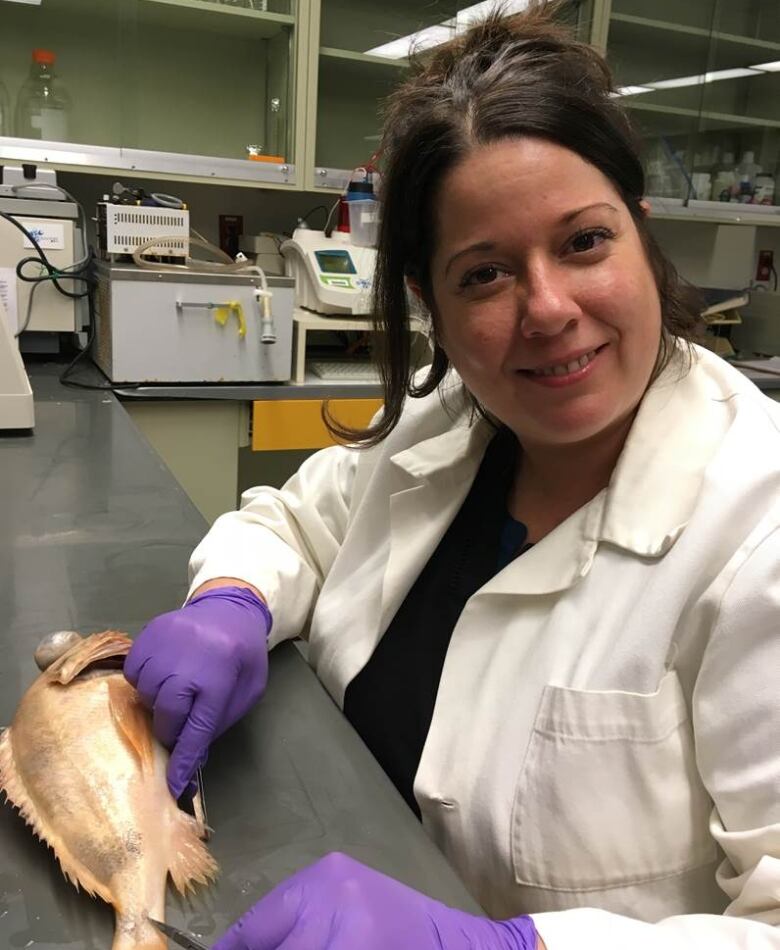COVID-19 delays research into connection between climate change, redfish boom
'It seems that redfish are kind of enjoying those new conditions in the Gulf,' says DFO researcher

Research on the suspected connection between the unprecedented rise of the redfish population in the Gulf of St. Lawrence and climate change is being delayed by COVID-19.
Experiments were supposed to begin last month at the Maurice-Lamontagne Institute in Mont-Joli, Que.
"Everything is kind of on the back-burner right now. All the fish are collected. We have them in our lab. We were ready to start these experiments," saidbiologist Caroline Senay, DFO's lead scientist on redfish in the Gulf.
"[But] as long as we cannot access the lab, I think everyone is having a hard time to know what they'll be doing exactly in the upcoming months."
It's a remarkable comeback for a population designated "endangered" in 2010 by the Committee on the Status of Endangered Wildlife in Canada, an independent advisory panel. The designation wasimposed based on a 98 per cent decline in abundance.

According to the 2019DFO stock assessment, there's now an estimated 4.3 million tonnes of redfish in the Gulf.
"We're seeing an astonishing increase. We have never seen these numbers. The biomass is going up exponentially," Senay said.
The massive population is primarily made of fish live born not hatched from eggs from 2011, 2012 and 2013.
The arrival of these cohorts coincided with record-warm ocean temperatures in the deepwater where redfish live.
"That is quite a mystery on how come, why did we win the lottery like this in those years where we've seen those large cohorts reappearing in the Gulf?The main explanation is surely in terms of temperature warming. That is maybe not beneficial for all species, but it seems that redfish are kind of enjoying those new conditions in the Gulf," Senaysaid.
Questions they want answered
The numbers of redfish have not grown, but their combined mass increased because the individual fish are thriving and heavier.
Senay said many questions need answering:
- Are the warmer temperatures today at the tolerance limit for redfish?
- What happens if the water gets warmer or more acidic?
- What doesredfish dominance meanfor other species in the Gulf of St. Lawrence, particularly on redfish prey, such as northern shrimp?
"We're going to expose them to different temperatures, to different acidity levels to kind of mimic actual and future conditions in the Gulf," Senay said.
"And we're gonna measure a bunch of physiological parameters such as their metabolism, their consumption rateand growth rate to see how that gradient of environmental conditions will affect redfish, but also their needs in terms of energy. So we'll have a better idea of the overall predation by redfish on shrimp."
Why they are difficult to study
To carry out that research,DFO retrieved hundreds of live redfish for testing in the summer and fall of 2019.
It's not as easy as it sounds because redfish brought up to the surface during fishing are almost always damaged, if not dead.
They have an air pocket in the abdomen that helps with buoyancy.If the fish is brought up to the surface too quickly, air expands as the pressure drops and the bladder stretches, which compresses the organs and the stomach is often pushed into the mouth of the fish.
The bladder may even burst.

Last year,DFO divers went to Les Escoumins, Que.In depths of 30 to40 metres, theyused dip nets to capture redfish one by one.
The fish were transferred into cages that were raised to the surface over a few days, performing decompression stops, much like divers do.
Today, there are 800 redfish in tanks at the Lamontagne Institute awaiting the return of DFO scientists like Senay.
2 types of redfish
Confusingly,redfish in the Gulf are made up of two nearly identical but distinct species:the far more common deepwater redfish and the Acadian redfish.
The DFO stock assessment says the combined biomass for both increased by 72 per cent between 2017 and 2019.
The assessment says 70 per cent of the deepwater redfish population have reached the legal minimum 22-centimetre size for harvest.

Jan Voutier, a manager at Louisbourg Seafoods, saidit's still too soon to resume large-scale fishing.
The Nova Scotia company catches redfish in the Atlantic.
"We are seeing them outside the Gulf. The fish are plentiful, but they're too small," saidVoutier.
"Our markets are demanding larger and larger fillets all the time and this fishery is years away from being ready."

DFO is proposing to maintain the current quota of 4,500 tonnesfor redfish in the Gulfwhen the 2020-21 season opens May 15.
Meanwhile, deepwater redfishis still considered an endangered species by the Committee on the Status of Endangered Wildlife in Canada.
The DFO stock assessment notes that a "revision appears warranted."
MORE TOP STORIES












_(720p).jpg)


 OFFICIAL HD MUSIC VIDEO.jpg)
.jpg)



























































































